How to Plant and Grow Winter Squash
Use these tips on how to grow winter squash to harvest delicious butternuts, delicata, pumpkins, and more.
Winter squashes (Cucurbita spp.) are known for the hard skin that protects them through the fall, winter, and sometimes spring, depending on the variety. Every type of winter squash (including pumpkin) is edible, but the amount of flesh on the inside varies, as does the flavor and texture. If you love roasted squash or homemade pumpkin pie, these dishes and desserts will taste even more delicious when made with winter squash you grew yourself.
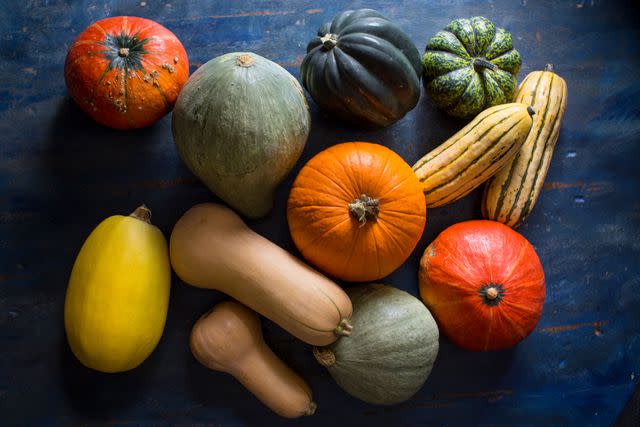
Helen Norman
Where to Plant Winter Squash
Winter squash plants need lots of space to grow. They require at least 4 to 6 feet to spread out, and some pumpkins can sprawl up to 15 feet. They’ll take over a garden quickly if not provided with plenty of room. If you lack space, grow small-fruited winter squash vertically on a sturdy trellis or opt for a bush-like cultivar. Large squash are too heavy to trellis.
All types of squash require rich, well-draining garden soil and a location where they receive full sun for six to eight hours a day.
Related: The 10 Best Types of Gourds to Grow for Decor, Crafts, and More
How and When to Plant Winter Squash
The best way to grow winter squash is from seed, and you don’t need to start them indoors like some vegetables. These seeds need warm soil, so you should wait at least two to three weeks after the last frost date in your area to sow the seeds. If you put the seeds in the ground too early, they will rot.
Make hills of soil about 1 foot in diameter and mound them up a few inches to improve drainage and give the seeds an abundance of good soil to grow in. Leave plenty of room—5 to 6 feet—between hills unless you are planting a bush variety squash. Put four to six seeds in a hill when the temperature reaches 65°F and cover them with 1 inch of soil. They need warmth to germinate.
As the plants emerge, thin out every other seedling so that you have two or three plants on one hill. As plants grow and sprawl, use a straw mulch underneath the pumpkins and squash to prevent them from being discolored or disfigured from sitting on the ground.
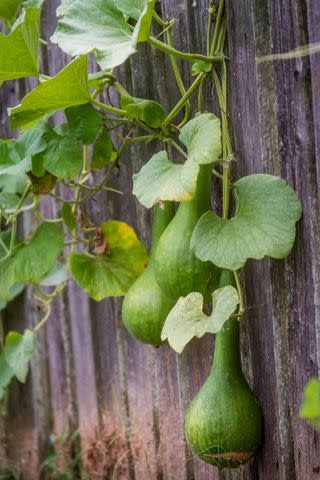
Rob Cardillo
Winter Squash Care Tips
Light
Winter squash plants require six to eight hours of direct sunlight daily.
Soil and Water
Winter squash plants grow best in rich, well-draining soil with a pH range of 6.0-6.5. Test your soil’s pH and amend it if necessary to reach this range.
Once the plants fill out, they take a fair amount of water, so a consistent watering plan is crucial. Winter squash need at least 1 inch of water weekly from rainfall or irrigation. Water the plants at soil level and keep the leaves and fruit as dry as possible to minimize plant diseases. A drip hose or soaker hose is handy for this purpose.
Related: The 8 Best Soaker Hoses of 2023 for a Thriving Garden
Temperature and Humidity
Most winter squash prefer warm weather and grow best in 50°F to 90°F. Winter squash plants tolerate light frost for short periods. A light frost that kills the squash vine might not kill the fruit; it can be harvested if ripe and undamaged. If colder temperatures are forecast, protect the plants from frost with tarps or blankets.
Squash plants tolerate a wide range of humidity levels as long as they receive water regularly.
Fertilizer
No other fertilizer may be needed when the soil is enriched with compost at planting time. If you don’t have compost, work three to four pounds of a 10-10-10 fertilizer into every 100 square feet of garden space before planting.
Many gardeners also recommend an application of organic liquid fertilizer when the plants start to bloom and again a month later, following the product directions.
Pruning
Pruning is not required, but cutting back a few non-producing vines at their base may improve the size of the developing fruit on the remaining vines.
Growing Squash in Containers
A single squash plant can grow comfortably outdoors in a 5-gallon container filled with well-draining potting mix (not heavier garden soil) as long as all its other needs are met—especially the sun and water requirements. A bush variety is a better fit for a container than a vining type of squash, although both are possible.
Pests and Problems
Pumpkins and squash have several pests that can plague them. Keep a close eye on your squash, and when you see yellowing leaves or holes, do a little investigating.
The main pests that afflict winter squash are cucumber beetles. While these are easy to control if there are a few here and there, but a heavy infestation can devastate your crop.
Since winter squash is edible, look for natural solutions to control pests. The easiest and most effective way to rid your patch of beetles is to manually pick them off as you see them. Garden centers also sell different types of traps—the most common being a sticky trap to put in your plot.
Look for squash varieties that are more disease- and pest-resistant to minimize problems.
How to Propagate Winter Squash
Propagate winter squash via cuttings or by collecting seeds. Be aware that the resulting fruit may not be exactly like the parent plants' fruit. Winter squash tend to cross-pollinate with other squashes and pumpkins.
If you aren’t concerned with cross-pollination, cut open any mature fruit and remove the seeds. Wash the pulp from the seeds and spread them across a paper towel to dry. Place the towel with the seeds in a dry area away from direct sunlight. After a week, store the dry seeds in an envelope. Label them and keep the seeds in a cool, dry place until you are ready to sow them.
Winter squash can also be propagated by taking stem cuttings from healthy plants. Each cutting should contain at least two or three nodes. Insert the cuttings into pots containing well-draining, potting mix and put them in a warm, bright light location (not direct sun). Keep them well watered, and the stem cuttings should begin to form roots in a couple of weeks. When the plant has rooted, move it to the garden after a week of hardening off. This process is usually used only with short-season squash.
Harvesting Winter Squash
When pumpkins and other types of winter squash reach the size you expect them to be, it’s harvest time. Look for fruits that don’t have blemishes or cuts. The skin should feel firm (not mushy), and the fruit should feel heavy for its size due to the abundance of moisture inside. Make sure to cut off the stem when harvesting—don’t tear it. Store pumpkins and squash in a cool, dry place so they won’t rot.
Types of Winter Squash
Pumpkin
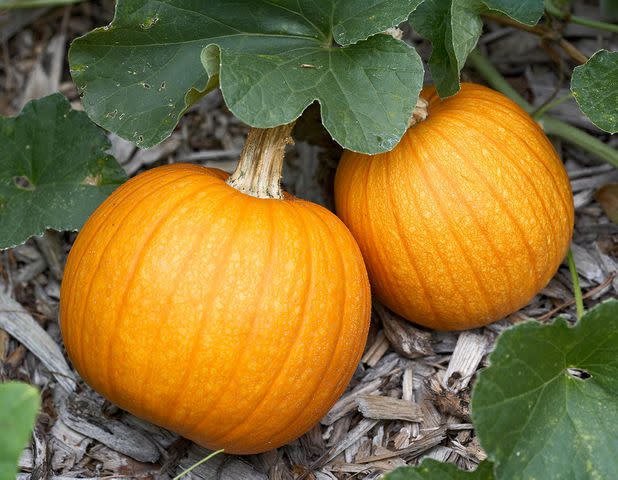
Pumpkins (Cucurbita pepo) come in lots of varieties from mini to giant. Most have been bred to be decorative, but some are meant for eating. Plus their seeds are edible. The vines may reach 15 feet in length.
Related: How to Cook Pumpkin Seeds In the Oven or Air Fryer
Butternut Squash
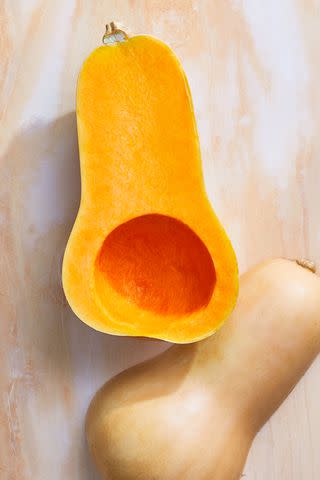
Carson Downing
With butternut squash (Cucurbita moschata ‘Butternut’), the name says it all—you don’t need to add butter. Butternut squash has tan-colored skin and orange-yellow, sweet flesh.
Related: 16 Healthy Butternut Squash Recipes for Fall Comfort Food
Spaghetti Squash
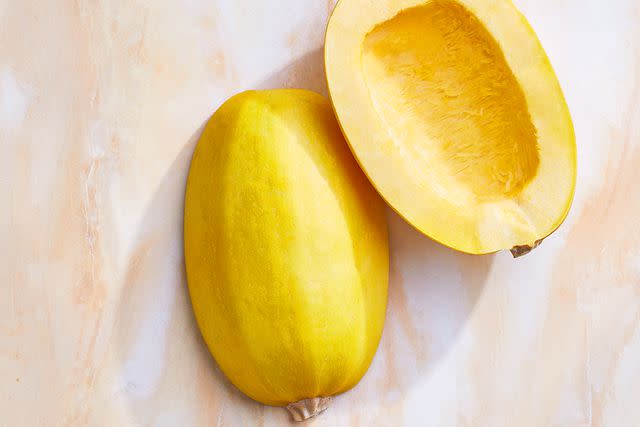
Carson Downing
Spaghetti squash (Cucurbita pepo) has a unique texture. Its yellow flesh creates noodle-like strands that are a tasty low-carb alternative to pasta.
Related: How to Cook Spaghetti Squash as a Low-Carb Pasta Alternative
Delicata Squash
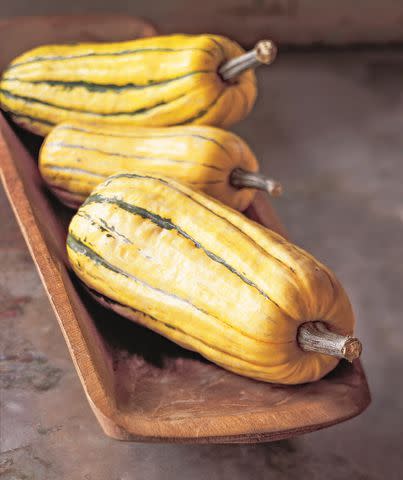
The skin of delicata squash (Cucurbita pepo ‘Delicata’) is thin and tender enough to eat after cooking, which sets it apart from other winter squash varieties. Its small size makes it an ideal candidate for slicing or stuffing with a filling of your choice.
Related: 4 Delicata Squash Recipes That Will Steal Hearts This Fall
Winter Squash Companion Plants
Corn
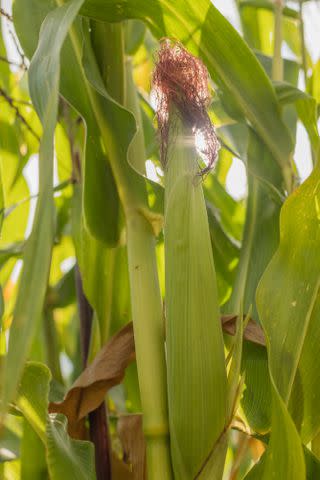
Bob Stefko
Corn is one part of the traditional plant partnership known as the Three Sisters (squash, beans, and corn). Corn is often grown with winter squash because the vines cover the soil to keep down weeds and retain soil moisture. Meanwhile, the corn stalks provide a sturdy support for beans (another of the sisters) to grow on.
Beans
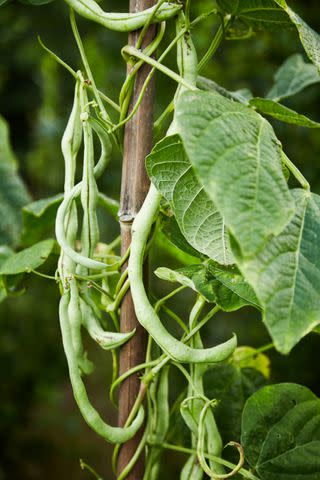
Dana Gallagher
Pole beans are nitrogen-fixing plants that improve the soil for both squash and corn. The beans benefit by using the corn as a support for climbing. They are easy to grow from seed sown directly in the garden.
Dill
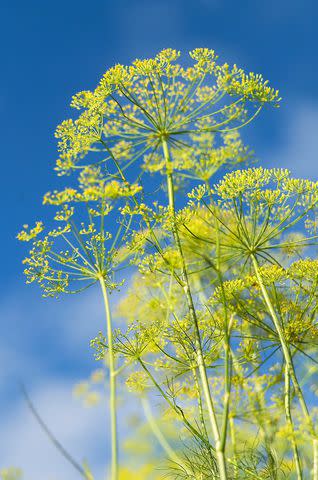
Aromatic dill repels squash bugs and other insects, so it is a welcome addition to a garden plot with winter squash. It’s also a favorite food for black swallowtail caterpillars, and its small yellow flowers are excellent for attracting a variety of pollinators.
Frequently Asked Questions
How do I store winter squash after harvest?
Winter squash with no spots or bruises will keep for several months when stored in a cool, dry place, such as a basement. Ideally, the temperature should be 50°F to 60°F with the humidity at 50%.
Can you eat winter squash right after harvesting it?
Wait for the winter squash to cure for a month before eating it. The flavor of most squashes improves during that time. A delicata squash is an exception to this; it should be eaten right away for the best flavor.
Can I freeze winter squash?
You can, but cook it before freezing. Peel it, remove the seeds, and cut the squash into pieces. Blanch the pieces in boiling water briefly. After they cool, store the pieces in bags in the freezer for up to 12 months.
For more Better Homes & Gardens news, make sure to sign up for our newsletter!
Read the original article on Better Homes & Gardens.

